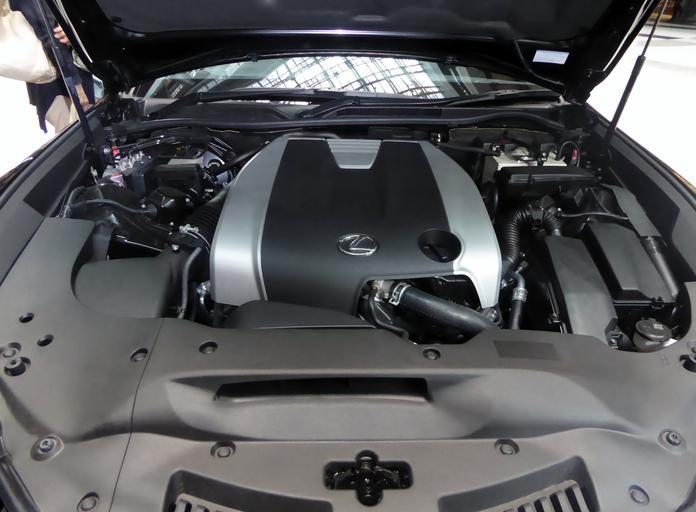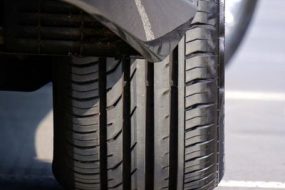
Having a car with a reduced engine power can be a nightmare with reason being that, the car will no longer be fun to drive.
Imagine driving a car with over 306 horsepower which gets 0 – 60mph under 5.7s, and being overtaken by a car with just 120 horsepower simply because of a reduced engine power. It’s indeed a nightmare.
However, there are many factors that can lead to a reduced engine power in a car and in this article we will discuss them and how to fix them.
How to Fix Reduced Engine Power
To fix a reduced engine power, you should:
Step 1: Check the Warning Lights
The fist step to take when you want to fix a car with a reduced engine power is by checking the kind of warning lights displayed on the car dashboard.
The kind of warning light will determine what the problem is and what to do. Since it is an engine related issue, you should look for the check engine warning light.
Once the check engine warning light is on, whether flashing or stable, it means there is something wrong with the engine that needs fixing.
The problem could be fatal, it could also be an easy fix. Whatever it is, you need to do the needful to find what the fault is and have it fixed.
Step 2: Scan the Car
The next step would be scanning the car to know what the fault is. The truth is, you can never know exactly what the fault is except when the car is scanned with a scanner tool. You can only guess.
If for example, the car is misfiring with the check engine light on, what would you guess it to be? Spark plugs? Ignition coils? etc. You can never know for sure until you scan the car.
Nevertheless, it is important to know how pertinent scanning the car is. Don’t do a guess work. It may cost you more than when the real issue is made known by a scanner tool.
Step 3: Fix or Replace the Faulty Parts
If after scanning the car you found the cause of the reduced engine power, you can either fix the issue or have the faulty parts replaced.
If for example, after scanning and it becomes obvious that the cause of the reduced engine power is a faulty ignition coil, have it replaced because ignition coils cannot be fixed.
However, it is important to note that while replacing a faulty part in a car, you should always replace them with the same exact parts that comes with the spoilt one, or at least, recommended by the manufacturer.
If for example, the cause of the reduced engine power is a damaged spark plugs, if the faulty spark plug is Denso iridium spark plug with a particular part number as the rest of the other working plugs, do not replace it with another brand that has different part number, rather, replace it with the same Denso part number. Please, this is important.
These are easiest ways to fix a reduced engine power. However, if after scanning the car and there was no faulty code available, you can go ahead and follow the procedures discussed below to discover what caused the reduced engine power you’re having.
Step 4: Check Your Air Filter
Air filter plays important role to every car. They are essential in maintaining the cars performance. Therefore, if something goes wrong with it, you will definitely notice by the way your engine performs.
Check for clogs and possible breakage or damage. If your air filter is dirty, you can either have it cleaned, or replaced.
However, depending on how dirty it is and how long it has been in use, you can either have it replaced or cleaned. It totally depend on you. If it is too dirty or has been in use for a long time, it is better to have it replaced.
Step 5: Check the Mass Air Flow Sensor
Just like the air filters, the mass air flow sensor plays a major role in car performance. However, if this sensor goes bad with a bad reading, it can affect the performance of your car.
The solution to this is very simple, just like the air filter, you can either have it cleaned or replaced.
Meanwhile, you should only use a mass air flow sensor cleaner when cleaning a MAF sensor. You should never use any cleaner that is not dedicated to cleaning the mass air flow sensor. This is because of how fragile the sensor is. It is something that easily spoil.
I suggest you watch videos on YouTube on how to clean a mass air flow sensor.
Step 6: Check for Air Leaks
Another thing that can cause your car’s performance to reduce drastically is air leaks. Please, check if air is leaking from anywhere in the engine. Check the hoses, some plastics/rubbers for possible leaks and other compartments for a loose nut/screw.
If for example, the air filter that is connected to the throttle body is not properly tightened, air can leak from there and affect the performance of your engine.
Step 7: Check for Loose Connections
Start by verifying if all the connections under the hood is properly connected as it could also cause the problem.
If for example you connect a hose that is meant for another, it will affect the car especially if the function of the hose is important.
The same goes to the wires, while you’re checking for hose connections, verify that the wires and its harness are properly connected where it should go.
For example, I don’t think you should connect a wire that is meant for cylinder 1 ignition coil to cylinder 2. Let the connections go where it should go and where there is a loose connection/bad wire harness/switch, replace it immediately.
Step 8: Check for Faulty Spark Plugs
As reiterated earlier, a bad spark plugs is usually the number one cause of a reduced engine power. Spark plugs plays so much role in a car that if one got spoilt, the car will feel it.
Therefore, verify to be sure that the spark plugs are all OK. To be on a safer side, if you see anyone that is too dirty, you can either have it replaced or cleaned.
Also, if your spark plugs has not been replaced for a long time, it could be the right time to have it replaced. The earlier the better.
Step 9: Check the Ignition Coils
Just like the spark plugs, the ignition coils plays another role that is noticeable if one got spoilt.
Depending on the nature of the fault, you will know whether it is coil problem or not, this is if the car is yet to throw any code.
However, if after scanning the car and it reads a misfire from any cylinder, you can put the faulty coil in another cylinder and drive the car for some miles.
If the fault is transferred to the cylinder where the faulty coil is installed, you can go ahead and replace the coil. But, if the problem remained in the same cylinder, then you’re sure the coil is not the problem.
You can either check the spark plug or the injector. or better still replace the coil and the plug of that cylinder to be on a safer side.
Step 10: Check for Faulty or Clogged Injectors
If the car is misfiring so bad and could not accelerate as it use to. Check your injectors and have them cleaned.
It is advisable to sometimes use a fuel injector cleaner at least in every oil change. These cleaners will help clean your injectors and save you the stress of manually cleaning the injectors.
There was a time I had a check engine light, I scanned and noticed a problem with cylinder 3. The misfire was too much and the car couldn’t accelerate properly.
I got a fuel injector cleaner and after 100 miles, the check engine light cleared by itself and fault corrected. The car started driving well.
It saved me the stress of manually cleaning the injector or replacing an injector that is still perfectly fine.
Step 11: Check for a Dirty Throttle Body
The throttle body and the throttle position sensor is another part of the car that shouldn’t be ignored if you have a reduced engine power.
If the throttle body is very dirty, the car will not be able to accelerate properly, hence, giving your a reduced engine power. Please have it clean immediately. It shouldn’t be clogged with oil and carbon.
Step 12: Check for a Low Engine Oil
Ensure that your engine oil is properly gauged. Check for oil leaks too. If you notice any oil leaks, have it fixed. Having little or no oil in your engine is a ticket to a damaged engine. You are advised to always check your oil level at least once a weak.
It is also important to always do your oil change when due. Very very important. Your engine needs it.
Step 13: Check for Dirty Fuel Filter
If your fuel filter is extremely dirty, it will definitely affect your acceleration. You car will not be able to move as it use to. You can either have the filter cleaned or replace it with another one.
Also, ensure your fuel pump is not going bad. You can scan and check the fuel pressure to be sure the fuel pump is pumping the fuel the way it should.
You don’t have to wait until the fuel pump is completely bad to do the needful. It might go bad in the middle of no where and leave you stranded. So, please check this while you can.
Step 14: Check for a Faulty Oxygen Sensor
Start by checking the nature of your oxygen sensor. If the oxygen sensor seems nice but dirty, have it cleaned. A damaged or dirty catalytic converter will not just affect the performance of your car, but it will also affect your gas mileage, etc.
Step 15: Check for a Broken Catalytic Converter
If your catalytic converter has gone too bad or has blocked your exhaust system, it will definitely cause a reduced engine power. We all know how important the exhaust pipes are to cars.
Just like the human anus, the exhaust pipes are where cars removes its unwanted fumes. So, if this place is blocked by a broken/bad catalytic converter, it will definitely affect the car. So please have it checked.
Meanwhile, you are always advised to use a catalytic converter cleaner at least once every oil change if your car is more than 8 years old. It will help to clean the converters and have them work the way they should.
Conclusion
These are the various ways by which you can detect and fix a reduced engine power in any car. It is better to have the car scanned to avoid doing a guess work. If after scanning the car and no fault code is available, you can drive the car for couple of days to enable the code to come on.
However, if after driving for a few days and the car could not read any codes, you can start checking what the problem could be starting from the spark plugs, ignition coils, air filters, mass air flow sensor, fuel filters, etc.









